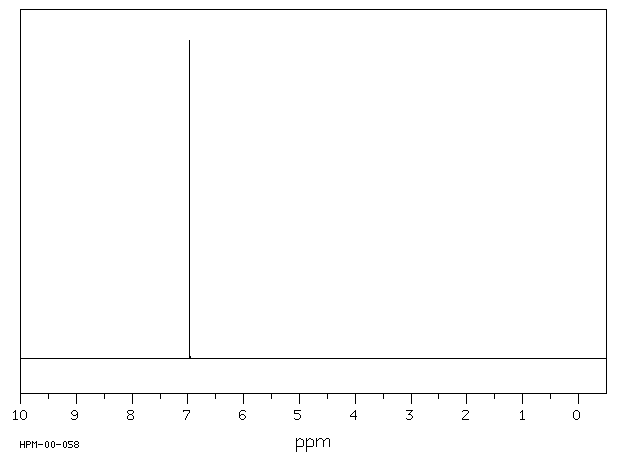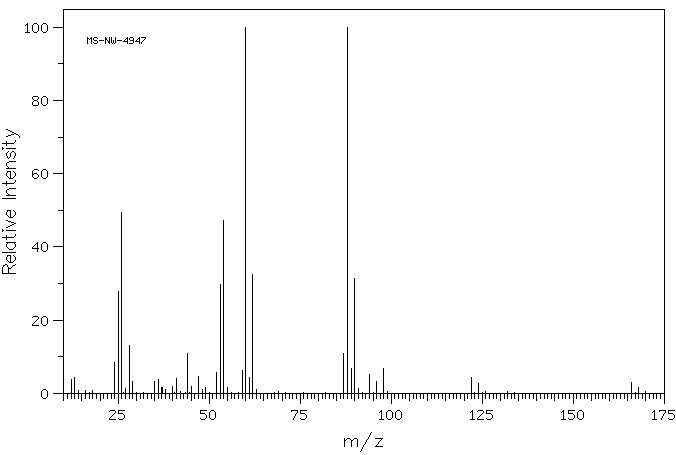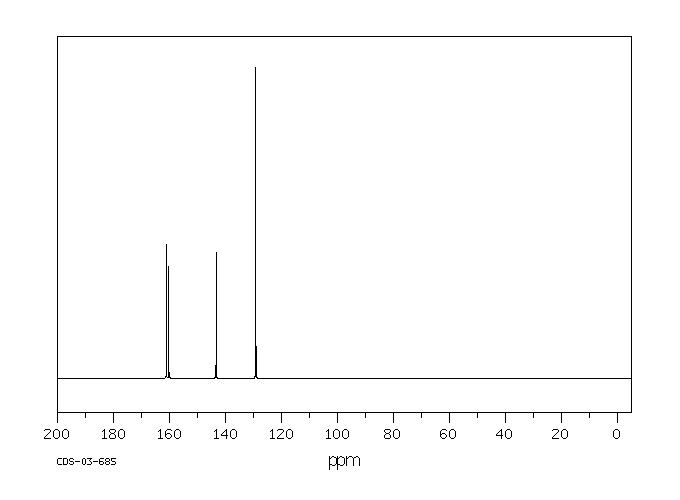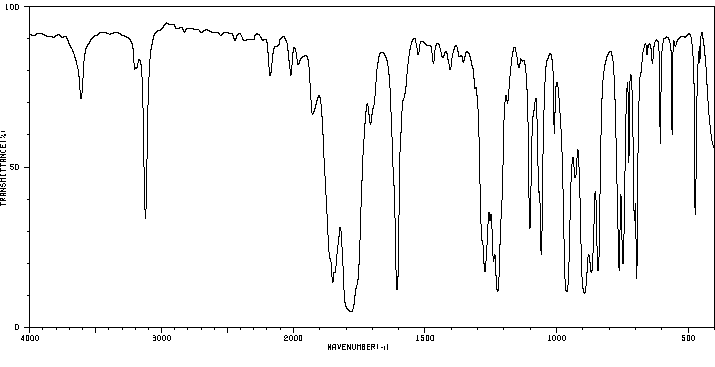| Name: | 2-Chloromaleic anhydride Material Safety Data Sheet |
| Synonym: | 2,5-Furandione, 3-chloro- |
| CAS: | 96-02-6 |
Section 1 - Chemical Product MSDS Name:2-Chloromaleic anhydride Material Safety Data Sheet
Synonym:2,5-Furandione, 3-chloro-
Section 2 - COMPOSITION, INFORMATION ON INGREDIENTS | CAS# | Chemical Name | content | EINECS# |
| 96-02-6 | 2-Chloromaleic anhydride | 100 | 202-470-4 |
Hazard Symbols: T
Risk Phrases: 22 24 34 42/43
Section 3 - HAZARDS IDENTIFICATION EMERGENCY OVERVIEW
Harmful if swallowed. Toxic in contact with skin. Causes burns. May cause sensitization by inhalation and skin contact.Moisture sensitive.Corrosive.
Potential Health Effects
Eye:
Causes eye burns. May cause conjunctivitis. Causes redness and pain. Exposure to high fume concentrations cause photophobia, double vision, and "halo" vision.
Skin:
Causes skin burns. May cause skin sensitization, an allergic reaction, which becomes evident upon re-exposure to this material.
Causes redness and pain. May cause blistering of the skin.
Ingestion:
Harmful if swallowed. Causes gastrointestinal tract burns.
Inhalation:
May cause asthmatic attacks due to allergic sensitization of the respiratory tract. Causes chemical burns to the respiratory tract.
Inhalation of high concentrations may cause pulmonary edema.
Chronic:
Prolonged or repeated skin contact may cause dermatitis. Repeated exposure may cause allergic respiratory reaction (asthma).
Section 4 - FIRST AID MEASURES Eyes: Get medical aid immediately. Do NOT allow victim to rub eyes or keep eyes closed. Extensive irrigation with water is required (at least 30 minutes).
Skin:
Get medical aid immediately. Flush skin with plenty of water for at least 15 minutes while removing contaminated clothing and shoes.
Wash clothing before reuse. Destroy contaminated shoes.
Ingestion:
Never give anything by mouth to an unconscious person. Get medical aid immediately. Do NOT induce vomiting. If conscious and alert, rinse mouth and drink 2-4 cupfuls of milk or water.
Inhalation:
Get medical aid immediately. Remove from exposure and move to fresh air immediately. If breathing is difficult, give oxygen. Do NOT use mouth-to-mouth resuscitation. If breathing has ceased apply artificial respiration using oxygen and a suitable mechanical device such as a bag and a mask.
Notes to Physician:
Section 5 - FIRE FIGHTING MEASURES General Information:
As in any fire, wear a self-contained breathing apparatus in pressure-demand, MSHA/NIOSH (approved or equivalent), and full protective gear. Dusts may be combustible when exposed to heat, flame, or oxidizing agents. Vapors may be heavier than air. They can spread along the ground and collect in low or confined areas.
Contact with metals may evolve flammable hydrogen gas.
Extinguishing Media:
Use carbon dioxide. Use alcohol foam. Do NOT use dry powder.
Section 6 - ACCIDENTAL RELEASE MEASURES General Information: Use proper personal protective equipment as indicated in Section 8.
Spills/Leaks:
Clean up spills immediately, observing precautions in the Protective Equipment section. Sweep up or absorb material, then place into a suitable clean, dry, closed container for disposal. Avoid generating dusty conditions. Provide ventilation.
Section 7 - HANDLING and STORAGE Handling:
Wash thoroughly after handling. Minimize dust generation and accumulation. Do not get in eyes, on skin, or on clothing. Do not ingest or inhale. Use only in a chemical fume hood.
Storage:
Store in a cool, dry place. Store in a tightly closed container.
Corrosives area. Do not store in metal containers.
Section 8 - EXPOSURE CONTROLS, PERSONAL PROTECTION Engineering Controls:
Facilities storing or utilizing this material should be equipped with an eyewash facility and a safety shower. Use adequate general or local exhaust ventilation to keep airborne concentrations below the permissible exposure limits.
Exposure Limits CAS# 96-02-6: Personal Protective Equipment Eyes: Wear appropriate protective eyeglasses or chemical safety goggles as described by OSHA's eye and face protection regulations in 29 CFR 1910.133 or European Standard EN166.
Skin:
Wear appropriate protective gloves to prevent skin exposure.
Clothing:
Wear appropriate protective clothing to prevent skin exposure.
Respirators:
Follow the OSHA respirator regulations found in 29 CFR 1910.134 or European Standard EN 149. Use a NIOSH/MSHA or European Standard EN 149 approved respirator if exposure limits are exceeded or if irritation or other symptoms are experienced.
Section 9 - PHYSICAL AND CHEMICAL PROPERTIES Physical State: Solid
Color: white
Odor: Not available.
pH: Not available.
Vapor Pressure: Not available.
Viscosity: Not available.
Boiling Point: Not available.
Freezing/Melting Point: Not available.
Autoignition Temperature: Not available.
Flash Point: Not available.
Explosion Limits, lower: Not available.
Explosion Limits, upper: Not available.
Decomposition Temperature:
Solubility in water:
Specific Gravity/Density:
Molecular Formula: C4HClO3
Molecular Weight: 132.55
Section 10 - STABILITY AND REACTIVITY Chemical Stability:
Stable under normal temperatures and pressures.
Conditions to Avoid:
Ignition sources, dust generation, metals, exposure to moist air or water.
Incompatibilities with Other Materials:
Strong oxidizing agents, strong reducing agents, strong bases, strong acids, alkali metals, alkaline earth metals, amines, caustics (e.g.
ammonia, ammonium hydroxide, calcium hydroxide, potassium hydroxide, sodium hydroxide), triethylamine, pyridine, ammonium ions.
Hazardous Decomposition Products:
Carbon monoxide, carbon dioxide, chloride fumes.
Hazardous Polymerization: Has not been reported
Section 11 - TOXICOLOGICAL INFORMATION RTECS#:
CAS# 96-02-6 unlisted.
LD50/LC50:
Not available.
Carcinogenicity:
2-Chloromaleic anhydride - Not listed by ACGIH, IARC, or NTP.
Section 12 - ECOLOGICAL INFORMATION
Section 13 - DISPOSAL CONSIDERATIONS Products which are considered hazardous for supply are classified as Special Waste and the disposal of such chemicals is covered by regulations which may vary according to location. Contact a specialist disposal company or the local waste regulator for advice. Empty containers must be decontaminated before returning for recycling.
Section 14 - TRANSPORT INFORMATION IATA
Shipping Name: CORROSIVE SOLID, TOXIC, N.O.S.
Hazard Class: 8
UN Number: 2923
Packing Group: III
IMO
Shipping Name: CORROSIVE SOLID, TOXIC, N.O.S.
Hazard Class: 8
UN Number: 2923
Packing Group: III
RID/ADR
Shipping Name: CORROSIVE SOLID, TOXIC, N.O.S.
Hazard Class: 8
UN Number: 2923
Packing group: III
Section 15 - REGULATORY INFORMATION European/International Regulations
European Labeling in Accordance with EC Directives
Hazard Symbols: T
Risk Phrases:
R 22 Harmful if swallowed.
R 24 Toxic in contact with skin.
R 34 Causes burns.
R 42/43 May cause sensitization by inhalation and
skin contact.
Safety Phrases:
S 24 Avoid contact with skin.
S 26 In case of contact with eyes, rinse immediately
with plenty of water and seek medical advice.
S 28 After contact with skin, wash immediately
with...
S 36/37/39 Wear suitable protective clothing, gloves
and eye/face protection.
S 45 In case of accident or if you feel unwell, seek
medical advice immediately (show the label where
possible).
WGK (Water Danger/Protection)
CAS# 96-02-6: No information available.
Canada
CAS# 96-02-6 is listed on Canada's NDSL List.
CAS# 96-02-6 is not listed on Canada's Ingredient Disclosure List.
US FEDERAL
TSCA
CAS# 96-02-6 is listed on the TSCA inventory.
SECTION 16 - ADDITIONAL INFORMATION N/A










